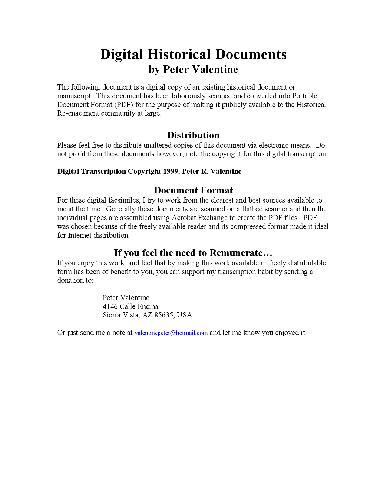- 2 402 202 книги
- Поиск
libcats.org










Beautiful Minds: The Parallel Lives of Great Apes and Dolphins
Maddalena Bearzi, Craig B. StanfordBearzi is the dolphin biologist and Stanford is the primatologist. The "parallels" between great apes and dolphins that the authors speak of are mostly in the use of what we call "intelligence" in their adaptations to life. Consequently this is a comparison of dolphin intelligence with primate intelligence, and of course implicitly with human intelligence.
The sections within the chapters are written first on one species and then on the other so that dolphin social behavior, for example, can be compared with primate social behavior (Chapter 4) or that their navigation through their differing environments can similarly be compared as in "Swimming with Dolphins, Swinging with Apes" (Chapter 3).
I was semi-surprised to learn that wild bottlenose dolphins even without hands have nonetheless been observed using tools--or a t least one tool, a sponge worn as "a nose cap." The main speculation here is that the dolphins use the sponges "to protect themselves from a variety of harmful and toxic organisms near the sea floor and to avoid the abrasive sand, rocks, and broken shells that litter the deep waters..." (pp. 144-145).
Of course dolphins in sea shows have been taught to use balls and other objects as "tools for entertainment"--which brings me to this consideration: is dolphin intelligence limited by the fact that dolphins have no hands with which to use tools? The authors seem to think so, and at any rate the sponge use is the only example of tool use in the wild that they report. Which brings up the question of how much do we really know about dolphin behavior and intelligence? Observing animals in zoos or as part of a theatric show is one thing; observing animals in the wild is another. Animals in the wild behave in ways that may surprise us, and our knowledge of the use and extent of dolphin intelligence may be limited because we are not able to systemically follow them in the wild.
The same is true for chimpanzees and other primates. In the February, 2010 issue of "National Geographic" there is an interesting article by Joshua Foer (with photos by Ian Nichols) about an encounter with chimps in the Congo's Nouabale-Ndoki National Park. Unlike other places in Africa the chimps encountered here had apparently never seen humans before. Their behavior--full of curiosity and "approach/avoidance" displays including nesting overnight in the trees directly above the camp of biologists Dave Morgan and Crickette Sanz--proved most surprising. The chimps spent part of the night "testing" the humans by throwing down urine and feces onto the tents and howling! This is a bit different from other reports that I have read.
In "Beautiful Minds," the authors speculate on whether dolphins and apes have "a theory of mind"--that is, whether they are aware of what others may be thinking and whether they have a sense of self. Some dolphins were "marked with black ink in an area of their bodies not visible to them. They could, however, feel the ink. A mirror was offered, and the dolphins were watched to see if they were visually monitoring their bodies to find the ink spot." Some were. (pp. 180-181) This suggests self-awareness. In chimps it has long been known that they recognize themselves in mirrors and realize that the image in the mirror is not some other chimp. Here it is reported that an Asian elephant "was also able to pass the mirror self-recognition test, repeatedly touching a white X on the side of her head with her trunk." (p. 180)
What is clear to me is that the great intelligence demonstrated by chimps, bonobos and dolphins (and humans, by the way) is primarily the result of the need to understand and negotiate the complex social relationships they have with others. This is the key to the growth of these big brains. But intelligence defined as the ability to solve problems applies directly to the search for and procurement of food. Dolphins use cooperative hunting to surround and force to the surface schools of fish so that they cannot easily escape. They even use bubbles to confuse and confine the fish. Apes use their minds to find and recall where and when they found fruits in season in a vast forest.
Ape intelligence is apparently limited by their inability to form abstract concepts, especially in terms of language that would allow them to pass on information to others. In the case of dolphins this is not so clear since we are at a loss when trying to understand what they are "saying" or why they do some of the things they do. It may be that we will find that dolphins do indeed have some sense of the abstract and can communicate about things such as fish not immediately present or actions and events in the past or imagined, which is the essence of human conceptual abilities. The trick is to have symbols such as words to stand for something not present or for acts not in evidence. Apes are limited in their ability to symbolize. Are dolphins so limited? We don't yet know.
Bearzi and Stanford in this very readable book have done a great job of bringing to a general readership some of the latest ideas and discoveries that are leading us toward a greater understanding of these unique beings, and of course to a better understand of ourselves.
The sections within the chapters are written first on one species and then on the other so that dolphin social behavior, for example, can be compared with primate social behavior (Chapter 4) or that their navigation through their differing environments can similarly be compared as in "Swimming with Dolphins, Swinging with Apes" (Chapter 3).
I was semi-surprised to learn that wild bottlenose dolphins even without hands have nonetheless been observed using tools--or a t least one tool, a sponge worn as "a nose cap." The main speculation here is that the dolphins use the sponges "to protect themselves from a variety of harmful and toxic organisms near the sea floor and to avoid the abrasive sand, rocks, and broken shells that litter the deep waters..." (pp. 144-145).
Of course dolphins in sea shows have been taught to use balls and other objects as "tools for entertainment"--which brings me to this consideration: is dolphin intelligence limited by the fact that dolphins have no hands with which to use tools? The authors seem to think so, and at any rate the sponge use is the only example of tool use in the wild that they report. Which brings up the question of how much do we really know about dolphin behavior and intelligence? Observing animals in zoos or as part of a theatric show is one thing; observing animals in the wild is another. Animals in the wild behave in ways that may surprise us, and our knowledge of the use and extent of dolphin intelligence may be limited because we are not able to systemically follow them in the wild.
The same is true for chimpanzees and other primates. In the February, 2010 issue of "National Geographic" there is an interesting article by Joshua Foer (with photos by Ian Nichols) about an encounter with chimps in the Congo's Nouabale-Ndoki National Park. Unlike other places in Africa the chimps encountered here had apparently never seen humans before. Their behavior--full of curiosity and "approach/avoidance" displays including nesting overnight in the trees directly above the camp of biologists Dave Morgan and Crickette Sanz--proved most surprising. The chimps spent part of the night "testing" the humans by throwing down urine and feces onto the tents and howling! This is a bit different from other reports that I have read.
In "Beautiful Minds," the authors speculate on whether dolphins and apes have "a theory of mind"--that is, whether they are aware of what others may be thinking and whether they have a sense of self. Some dolphins were "marked with black ink in an area of their bodies not visible to them. They could, however, feel the ink. A mirror was offered, and the dolphins were watched to see if they were visually monitoring their bodies to find the ink spot." Some were. (pp. 180-181) This suggests self-awareness. In chimps it has long been known that they recognize themselves in mirrors and realize that the image in the mirror is not some other chimp. Here it is reported that an Asian elephant "was also able to pass the mirror self-recognition test, repeatedly touching a white X on the side of her head with her trunk." (p. 180)
What is clear to me is that the great intelligence demonstrated by chimps, bonobos and dolphins (and humans, by the way) is primarily the result of the need to understand and negotiate the complex social relationships they have with others. This is the key to the growth of these big brains. But intelligence defined as the ability to solve problems applies directly to the search for and procurement of food. Dolphins use cooperative hunting to surround and force to the surface schools of fish so that they cannot easily escape. They even use bubbles to confuse and confine the fish. Apes use their minds to find and recall where and when they found fruits in season in a vast forest.
Ape intelligence is apparently limited by their inability to form abstract concepts, especially in terms of language that would allow them to pass on information to others. In the case of dolphins this is not so clear since we are at a loss when trying to understand what they are "saying" or why they do some of the things they do. It may be that we will find that dolphins do indeed have some sense of the abstract and can communicate about things such as fish not immediately present or actions and events in the past or imagined, which is the essence of human conceptual abilities. The trick is to have symbols such as words to stand for something not present or for acts not in evidence. Apes are limited in their ability to symbolize. Are dolphins so limited? We don't yet know.
Bearzi and Stanford in this very readable book have done a great job of bringing to a general readership some of the latest ideas and discoveries that are leading us toward a greater understanding of these unique beings, and of course to a better understand of ourselves.
Скачать книгу бесплатно (pdf, 1.59 Mb)
Читать «Beautiful Minds: The Parallel Lives of Great Apes and Dolphins»
Читать «Beautiful Minds: The Parallel Lives of Great Apes and Dolphins»
EPUB | FB2 | MOBI | TXT | RTF
* Конвертация файла может нарушить форматирование оригинала. По-возможности скачивайте файл в оригинальном формате.
Популярные книги за неделю:

Проектирование и строительство. Дом, квартира, сад
Автор: Петер Нойферт, Автор: Людвиг Нефф
Размер книги: 20.83 Mb

Система упражнений по развитию способностей человека (Практическое пособие)
Автор: Петров Аркадий НаумовичКатегория: Путь к себе
Размер книги: 818 Kb

Сотворение мира (3-х томник)
Автор: Петров Аркадий НаумовичКатегория: Путь к себе
Размер книги: 817 Kb

Радиолюбительские схемы на ИС типа 555
Автор: Трейстер Р.Категория: Электротехника и связь
Размер книги: 13.64 Mb
Только что пользователи скачали эти книги:

Angelo broadsword
Автор:Категория: 1528206-Подборка старых книг по фехтованию
Размер книги: 26.07 Mb

Head First Web Design
Автор: Ethan Watrall, Автор: Jeff SiartoКатегория: Computer science
Размер книги: 40.54 Mb

Теория налогообложения
Автор: Занадворов В.С.Категория: Экономика общественного сектора
Размер книги: 223 Kb

Microeconomics: Principles and Applications
Автор: Robert E. Hall, Автор: Marc Lieberman
Размер книги: 5.07 Mb

Убийцы в белых халатах, или Как Сталин готовил еврейский погром
Автор: Валентин Ерашов
Размер книги: 13.78 Mb

Experimental Mechanics of Solids
Автор: C.A. Sciammarella, Автор: F.M. SciammarellaКатегория: Strength of materials.Solids -- Mechanical properties.Structural analysis (Engineering)TECHNOLOGY & ENGINEERING , Material Science
Размер книги: 12.17 Mb




